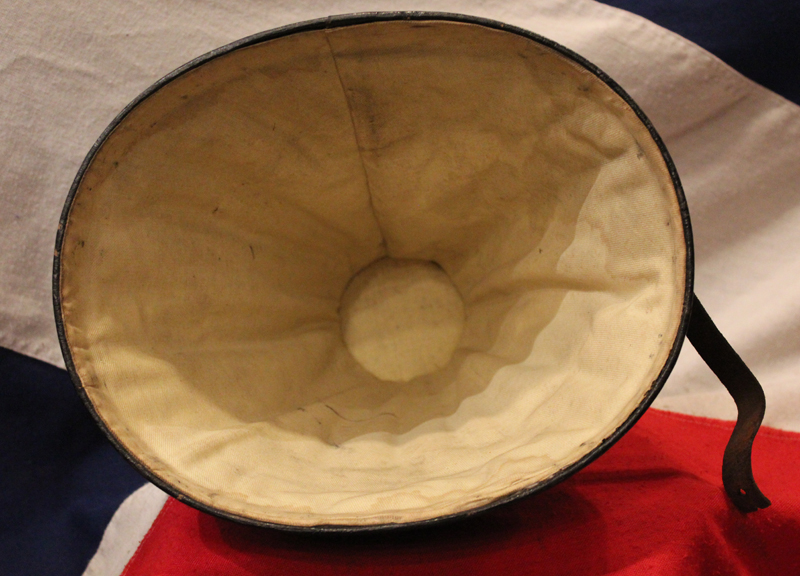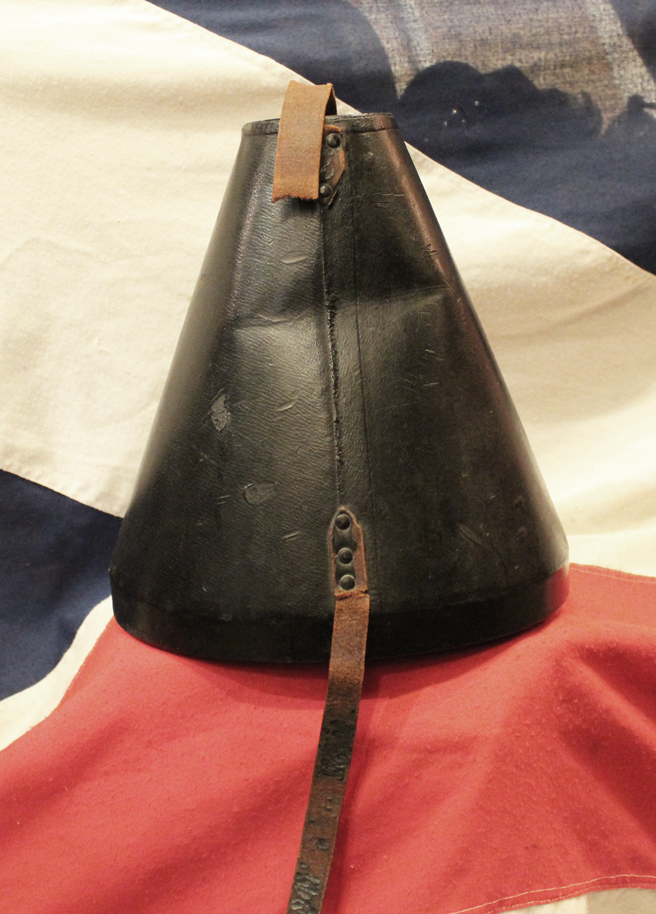A Good Original Imperial German Pickelhaube German Spiked Helmet Case
In pressed fibreboard and leather strapping. Overall in very nice condition but the straps have either partially of fully seperated. A rare collectable that is now very scarcely seen. Ideal to accompany any good pickelhaube, either spike or ball topped. The Pickelhaube was originally designed in 1842 by King Frederick William IV of Prussia, perhaps as a design based on similar helmets that were adopted at the same time by the Russian military. It is not clear whether this was a case of imitation, parallel invention, or if both were based on the earlier Napoleonic cuirassier. The early Russian type (known as "The Helmet of Yaroslav Mudry") was also used by cavalry, which had used the spike as a holder for a horsehair plume in full dress, a practice also followed with some Prussian models.
Frederick William IV introduced the Pickelhaube for use by the majority of Prussian infantry on October 23, 1842 by a royal cabinet order. The use of the Pickelhaube spread rapidly to other German principalities. Oldenburg adopted it by 1849, Baden by 1870, and in 1887, the Kingdom of Bavaria was the last German state to adopt the Pickelhaube (since the Napoleonic Wars, they had had their own design of helmet, called the Raupenhelm.
From the second half of the 19th century onwards, the armies of a number of nations besides Russia, (including Bolivia, Colombia, Chile, Ecuador, Mexico, Portugal, Norway, Sweden and Venezuela,) adopted the Pickelhaube or something very similar.
The Russian version initially had a horsehair plume fitted to the end of the spike, but this was later discarded in some units. The Russian spike was topped with a grenade motif. At the beginning of the Crimean War, such helmets were common among infantry and grenadiers, but soon fell out of place in favour of the fatigue cap. After 1862 the spiked helmet ceased to be generally worn by the Russian Army, although it was retained until 1914 by the Cuirassier regiments of the Imperial Guard and the Gendarmerie. The Russians prolonged the history of the pointed military headgear with their own cloth Budenovka in the early 20th century. All helmets produced for the infantry before and during 1914 were made of leather. As the war progressed, Germany's leather stockpiles dwindled. After extensive imports from South America, particularly Argentina, the German government began producing ersatz Pickelhauben made of other materials. In 1915, some Pickelhauben began to be made from thin sheet steel. However, the German high command needed to produce an even greater number of helmets, leading to the usage of pressurized felt and even paper to construct Pickelhauben.
During the early months of World War I, it was soon discovered that the Pickelhaube did not measure up to the demanding conditions of trench warfare. The leather helmets offered virtually no protection against shell fragments and shrapnel and the conspicuous spike made its wearer a target. These shortcomings, combined with material shortages, led to the introduction of the simplified model 1915 helmet described above, with a detachable spike. In September 1915 it was ordered that the new helmets were to be worn without spikes, when in the front line
Code: 20806
345.00 GBP






